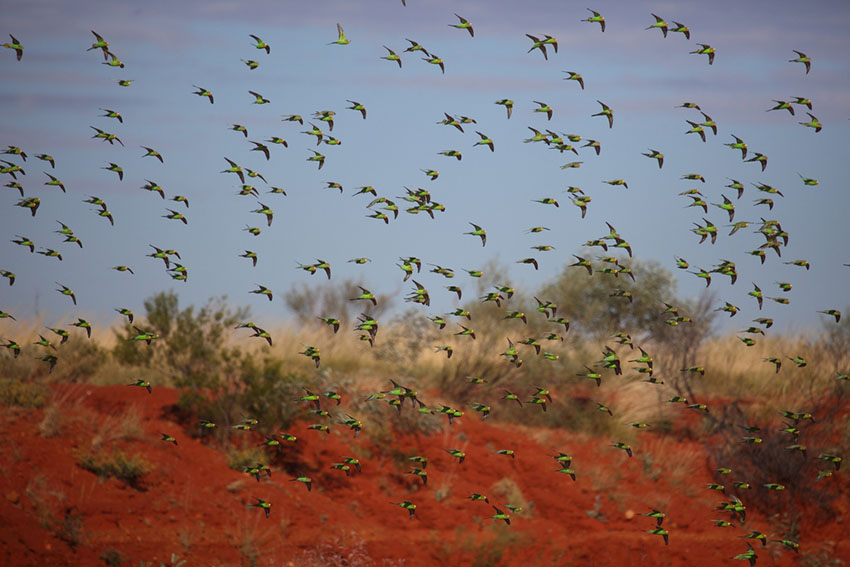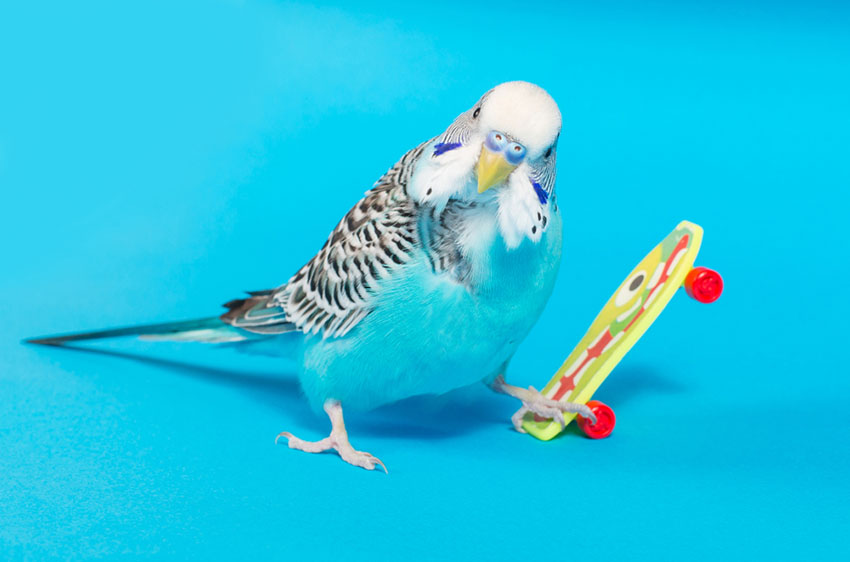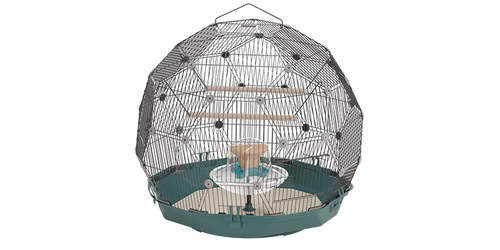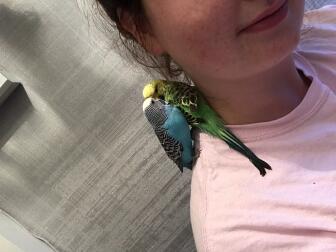Less than a century after being discovered by Europeans, parakeets were being kept as pets. British sailors returning from the east coast of Australia, a voyage lead by Captain James Cook, reported seeing huge flocks of small green birds—flocks reportedly so large that they sometimes blocked out the sun. Although they didn’t know at the time, these birds were definitely budgerigars—the pet known as the parakeet here in the US.

Parakeets live in huge flocks in the wild
In 1805, the British Museum’s natural history department assistant keeper, George Shaw, first described the budgerigar to the scientific community, and in doing so added it to the list of known species. Yet it was not until 1840 that the first pair were brought over to Britain, by English bird enthusiast and artist John Gould. Gould spent the 1830s researching and compiling his book, Birds of Australia. This book contained coloured prints and descriptions of 681 Australian birds, the budgie being one of them. His book was first published between 1840 and 1848 in 36 different parts, later compiled into 8 separate volumes.
Gould described parakeets as “the most animated, cheerful little creatures you can possibly imagine”, and also stated that they were good to eat! He noted that the bird was uncommon, although it is possible that he wasn’t observing the largest flocks, and as a result of this, getting a skewed impression of the population. It is also possible that their scarcity could have been linked to the expansion of sheep farms in Australia. In the wild, the parakeet is a ground-feeding bird. Most of the time their meal of choice is either grass or seeds, and with the arrival of sheep and rabbits, there wasn’t as much grass to go around.
Despite the fact that parakeets were relatively uncommon in Australia, they soon became a common sight in many European aviaries, and the bird’s popularity hasn’t waned since. Thankfully, the idea of eating parakeets never really caught on.
In 1845, Britain’s Queen Victoria was gifted a pair of parakeets. A couple decades later the bird was apparently being imported in such numbers that it was barley sustainable. Sources say that every ship coming from South Australia had parakeets in their cargo, sometimes in numbers as high as 2000.
The export of parakeets from Australia was banned in 1894, but by this time the birds were being bred all throughout Europe. The craze for parakeets started a bit later in the USA, and although birds were being sold in the late 19th century, the trade only really picked up in the 1950s.

Parakeets are cool!
According to legend, the guys marketing parakeets in the early 20th century decided that the word “budgerigar” was too weird for American folks, so they marketed the bird as “parakeet” instead, knowing that people would be familiar with the word through native species the Carolina parakeet, a once common bird that was hunted to extinction (the last one dying in Cincinnati Zoo in 1918). They could have used the simple, short form “budgie”, but they didn’t. Whatever the reason, parakeet, or the shortened form ‘keet, is now the everyday name for the bird here in the US.
The parakeet really was the king of pet birds. Towards the end of the 19th century the birds were being kept by almost everyone, from European monarchs to everyday city-dwellers.





Comments
Damien, 3 March 2021
I love budgies!!!
Devanshi, 1 March 2019
why is my budgie having hair loss